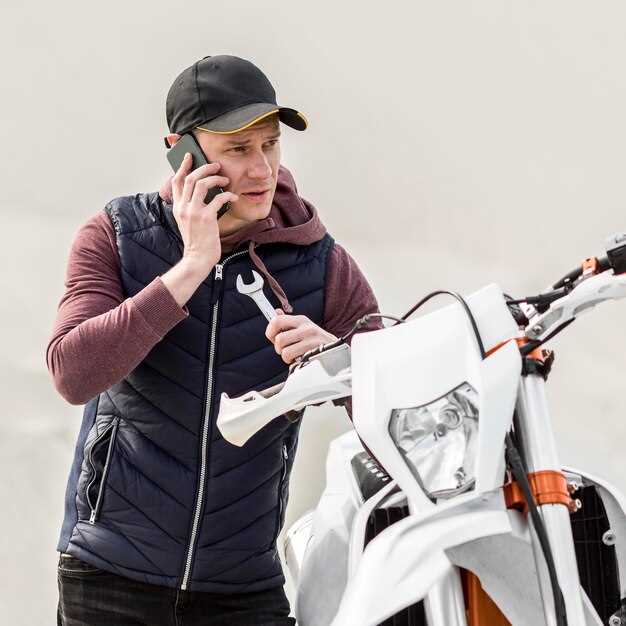
When embarking on exhilarating motorcycle adventures, precise navigation becomes paramount. The right GPS device not only enhances your travel experience but also ensures you remain on the right path, no matter where the open road takes you. As motorcycle enthusiasts know, the journey often holds more importance than the destination, and a reliable GPS can transform your ride into an unforgettable exploration.
Choosing the best GPS for motorcycle use involves more than just selecting a device with the latest features. Riders must consider factors such as screen readability in bright sunlight, ruggedness to withstand the elements, and user-friendly interfaces. In addition to basic GPS functions, many devices now offer advanced features like real-time traffic updates, customizable route planning, and even integration with mobile apps for seamless connectivity.
Whether you’re navigating winding mountain roads or cruising along scenic coastlines, having a top-quality GPS designed specifically for motorcycles can enhance safety and reduce stress. In the following sections, we will explore the key features to look for, the benefits of dedicated motorcycle GPS devices, and some of the best models available on the market. Prepare to elevate your adventure with the perfect navigational companion!
Key Features to Look for in a Motorcycle GPS Device

When selecting a motorcycle GPS device, there are several essential features that enhance navigation and overall riding experience. First and foremost, ruggedness is crucial. A good GPS should be waterproof and withstand vibrations from the motorcycle, ensuring it operates reliably in various weather conditions.
Another important aspect is screen readability. The display should be large, bright, and easy to read in bright sunlight. A touchscreen interface with glove-friendly functionality can significantly improve usability on the road.
Navigation accuracy is vital for a successful journey. Look for devices that offer real-time traffic updates, accurate maps, and alternative route suggestions. Advanced GPS systems benefit from features like smart routing, which considers road types, traffic conditions, and even scenic routes for a more enjoyable ride.
Bluetooth connectivity allows riders to connect their GPS device to a smartphone or helmet communication system. This feature enables hands-free calls, music streaming, and voice navigation, enhancing safety by minimizing distractions.
Battery life is another critical consideration. A motorcycle GPS should offer long-lasting performance to avoid frequent recharging during journeys. Look for devices with a battery life that can support extended trips without interruption.
Lastly, choose a GPS that offers user-friendly software. This includes easy map updates and a straightforward interface for creating and managing routes. The ability to save favorite destinations and access trip planning features can greatly enrich the riding experience.
Best GPS Models for Off-Road and On-Road Riding

Choosing the right GPS for your motorcycle adventures, whether on-road or off-road, can significantly enhance your riding experience. Here are some of the top models that cater to both terrains:
Garmin Montana 700i: This rugged GPS device is ideal for off-road enthusiasts. It features a large, sunlight-readable touchscreen and comes with preloaded topographic maps. The Montana 700i also offers satellite inReach technology, allowing for two-way messaging and SOS functionality even in remote areas.
TomTom Rider 550: Perfect for on-road riding, the TomTom Rider 550 integrates seamlessly with smartphones and provides live traffic updates. Its waterproof design ensures durability in various weather conditions, while the intuitive interface allows for quick route adjustments.
Garmin Zumo XT: Designed specifically for motorcycle use, the Garmin Zumo XT excels in both on-road navigation and off-road adventures. With its robust build, it features a vivid display that’s easy to read in bright sunlight. The device also allows for customizable route planning, giving you the freedom to explore unpaved trails.
Magellan TRX7 CS: This GPS model is tailored for off-road riding and is equipped with thousands of trail maps. Its high-resolution screen provides clear navigation, and it is built to withstand harsh environments. The Magellan TRX7 CS combines adventure and safety with features like a built-in dash cam.
Garmin Nuvi 2597LMT: While more suited for urban commuting, the Garmin Nuvi 2597LMT offers excellent features for on-road motorcyclists. It includes lifetime map updates and real-time traffic notifications, ensuring you stay on the best routes. Its slim design makes it easy to mount without hindering the riding experience.
When selecting a GPS for motorcycle riding, consider factors such as screen size, durability, and mapping options. Off-road riders may prioritize ruggedness and off-grid capabilities, while on-road travelers might look for real-time traffic updates and smartphone compatibility.
Tips for Maintaining and Updating Your Motorcycle GPS
Proper maintenance and timely updates are crucial to ensuring your motorcycle GPS remains reliable and efficient for your adventures. Here are important tips to keep your device in optimal condition.
1. Regularly Update Maps and Software: Make it a habit to check for updates at least once every few months. Updated maps contain the latest road changes, new routes, and important points of interest, which enhance your navigation experience.
2. Clean Your GPS Screen: Dust, dirt, and fingerprints can accumulate on the screen, making it difficult to read directions. Use a soft, microfiber cloth to gently clean the screen, avoiding harsh chemicals that could damage it.
3. Charge the Battery Frequently: Always ensure your GPS device is fully charged before setting off. Utilize a charging device that works with your motorcycle to recharge while on the go, especially during long trips.
4. Store in a Protective Case: To avoid damage from vibrations or weather conditions, invest in a durable case designed for motorcycles. This will safeguard your GPS from scratches and impacts during your rides.
5. Backup Important Data: Regularly back up your saved routes, waypoints, and favorite locations to a computer or cloud storage. This ensures that you won’t lose valuable information in case of device malfunction.
6. Monitor Performance: Pay attention to how quickly the GPS acquires satellite signals and responds to commands. If you notice significant delays, it may be time to reset the device or consult the manual for troubleshooting.
7. Use the Right Mount: Ensure that the mount holding your GPS is secure and designed specifically for motorcycle use. A stable mount prevents bouncing and increases visibility while riding.
8. Keep It Dry: If your motorcycle GPS is not waterproof, take precautions to keep it dry. Use a weatherproof case or bag when riding in wet conditions and avoid exposing it to excessive moisture.
By following these guidelines, you can extend the lifespan of your motorcycle GPS while enhancing your riding experience. Proper care and updates can make all the difference during your adventures on the road.
